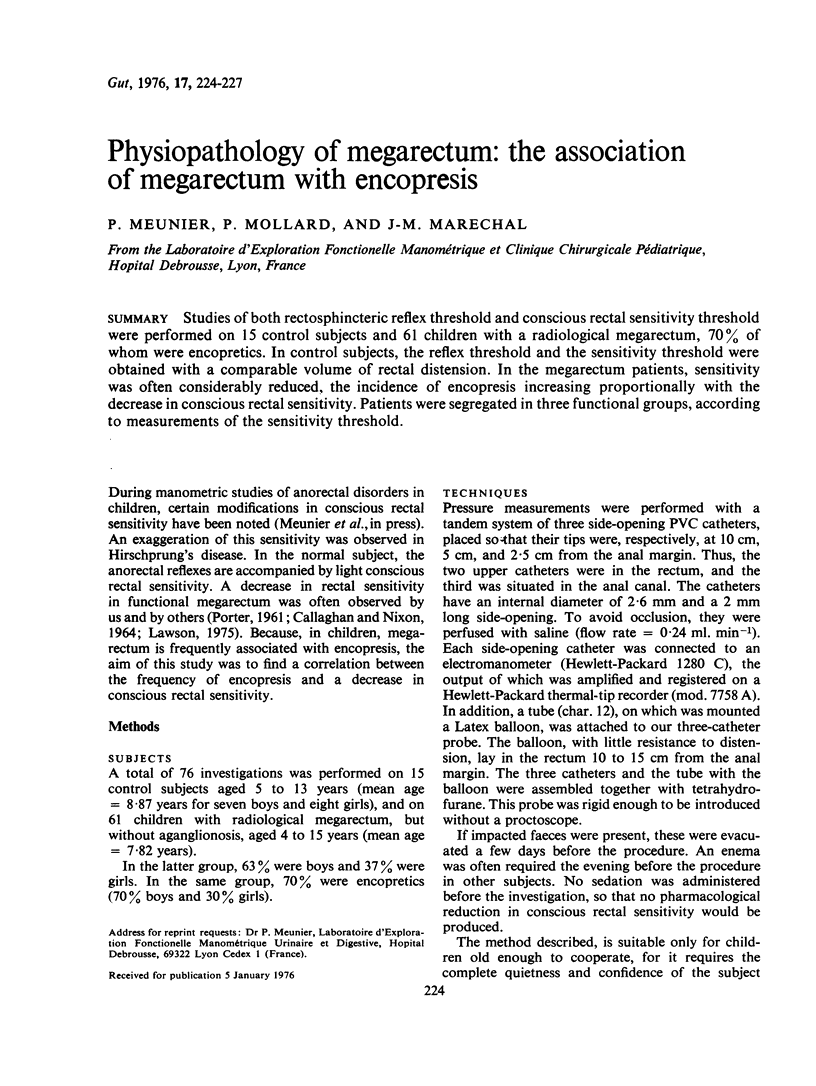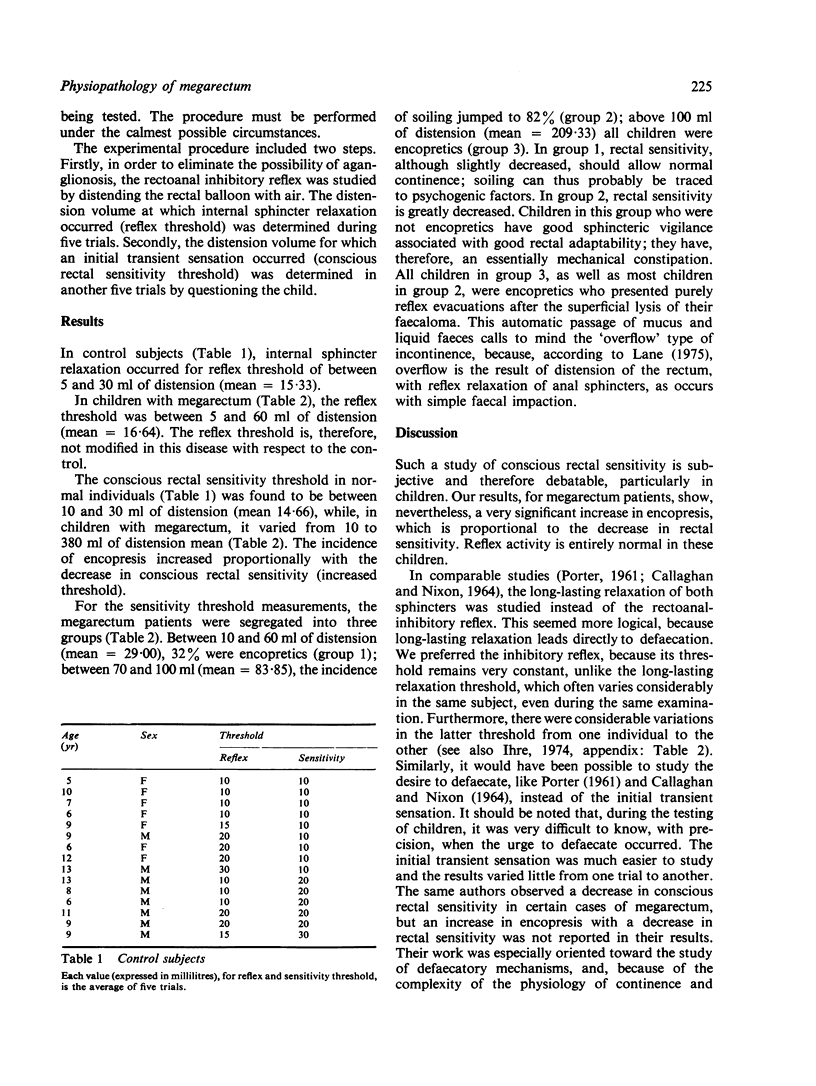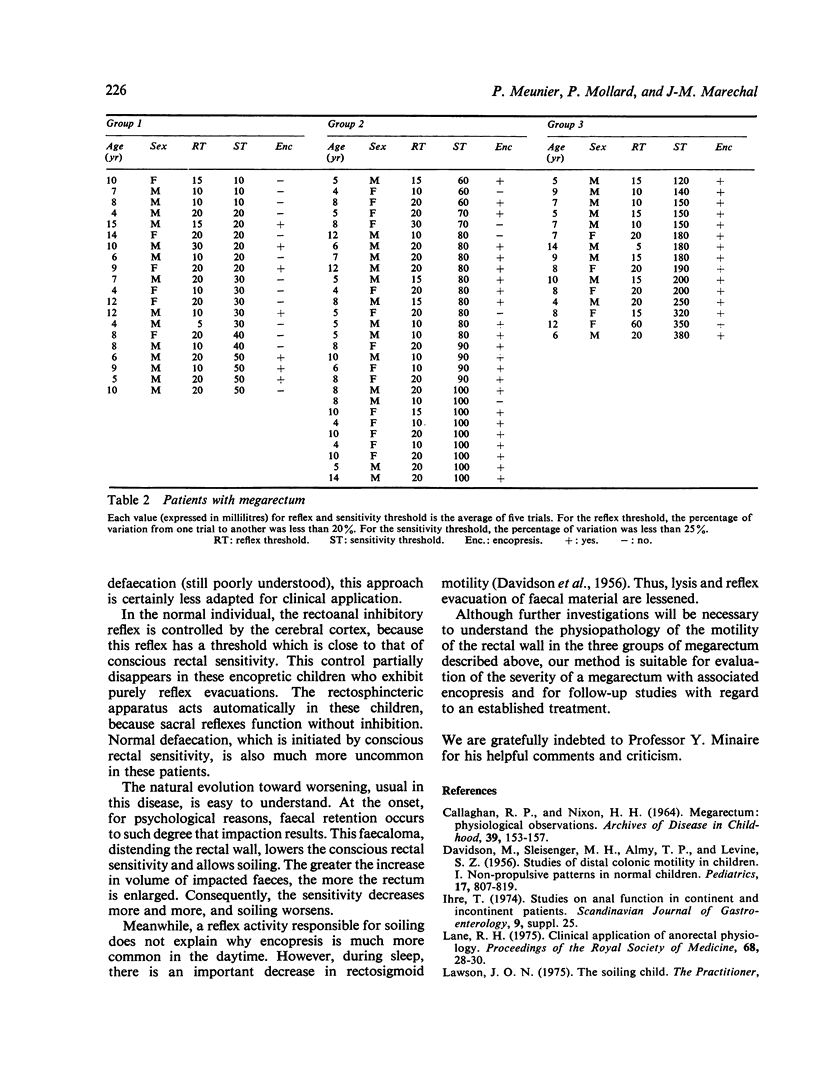Abstract
Studies of both rectosphincteric reflex threshold and conscious rectal sensitivity threshold were performed on 15 control subjects and 61 children with a radiological megarectum, 70% of whom were encopretics. In control subjects, the reflex threshold and the sensitivity threshold were obtained with a comparable volume of rectal distension. In the megarectum patients, sensitivity was often considerably reduced, the incidence of encopresis increasing proportionally with the decrease in conscious rectal sensitivity. Patients were segregated in three functional groups, according to measurements of the sensitivity threshold.
Full text
PDF



Selected References
These references are in PubMed. This may not be the complete list of references from this article.
- CALLAGHAN R. P., NIXON H. H. MEGARECTUM: PHYSIOLOGICAL OBSERVATIONS. Arch Dis Child. 1964 Apr;39:153–157. doi: 10.1136/adc.39.204.153. [DOI] [PMC free article] [PubMed] [Google Scholar]
- DAVIDSON M., SLEISENGER M. H., ALMY T. P., LEVINE S. Z. Studies of distal colonic motility in children. I. Non-propulsive patterns in normal children. Pediatrics. 1956 Jun;17(6):807–819. [PubMed] [Google Scholar]
- Lane R. H. Clinical application of anorectal physiology. Proc R Soc Med. 1975 Jan;68(1):28–30. [PMC free article] [PubMed] [Google Scholar]
- PORTER N. H. Megacolon: a physiological study. Proc R Soc Med. 1961 Dec;54:1043–1047. [PubMed] [Google Scholar]


